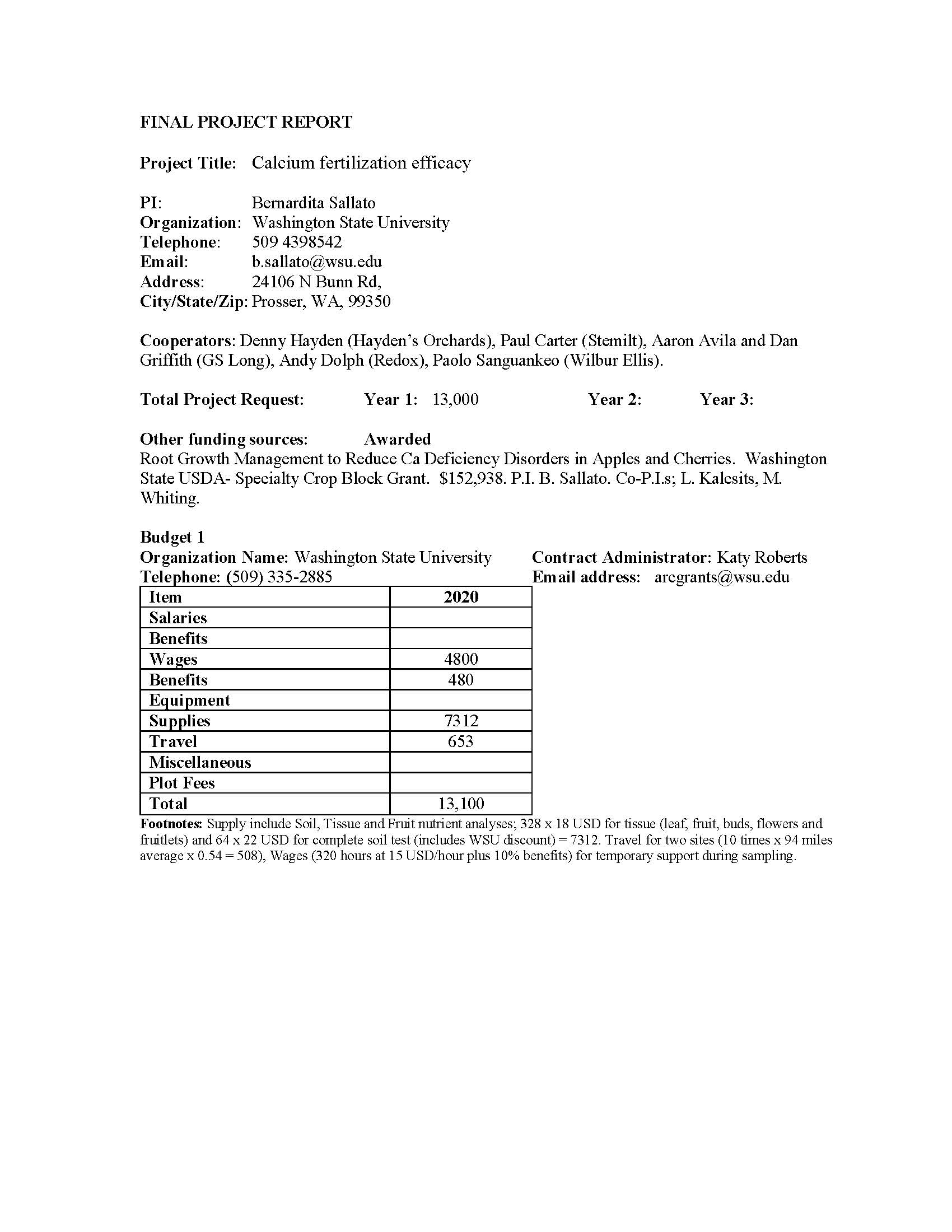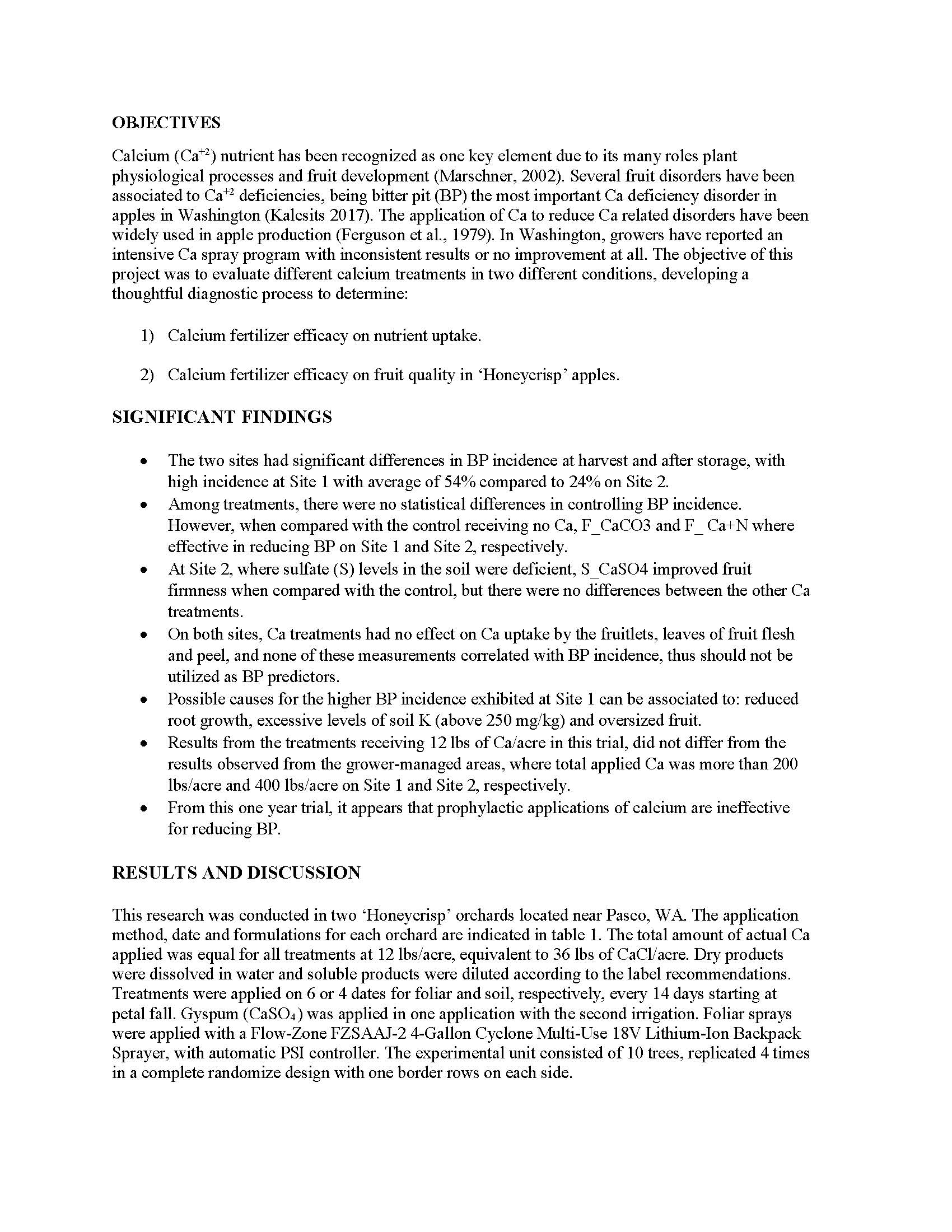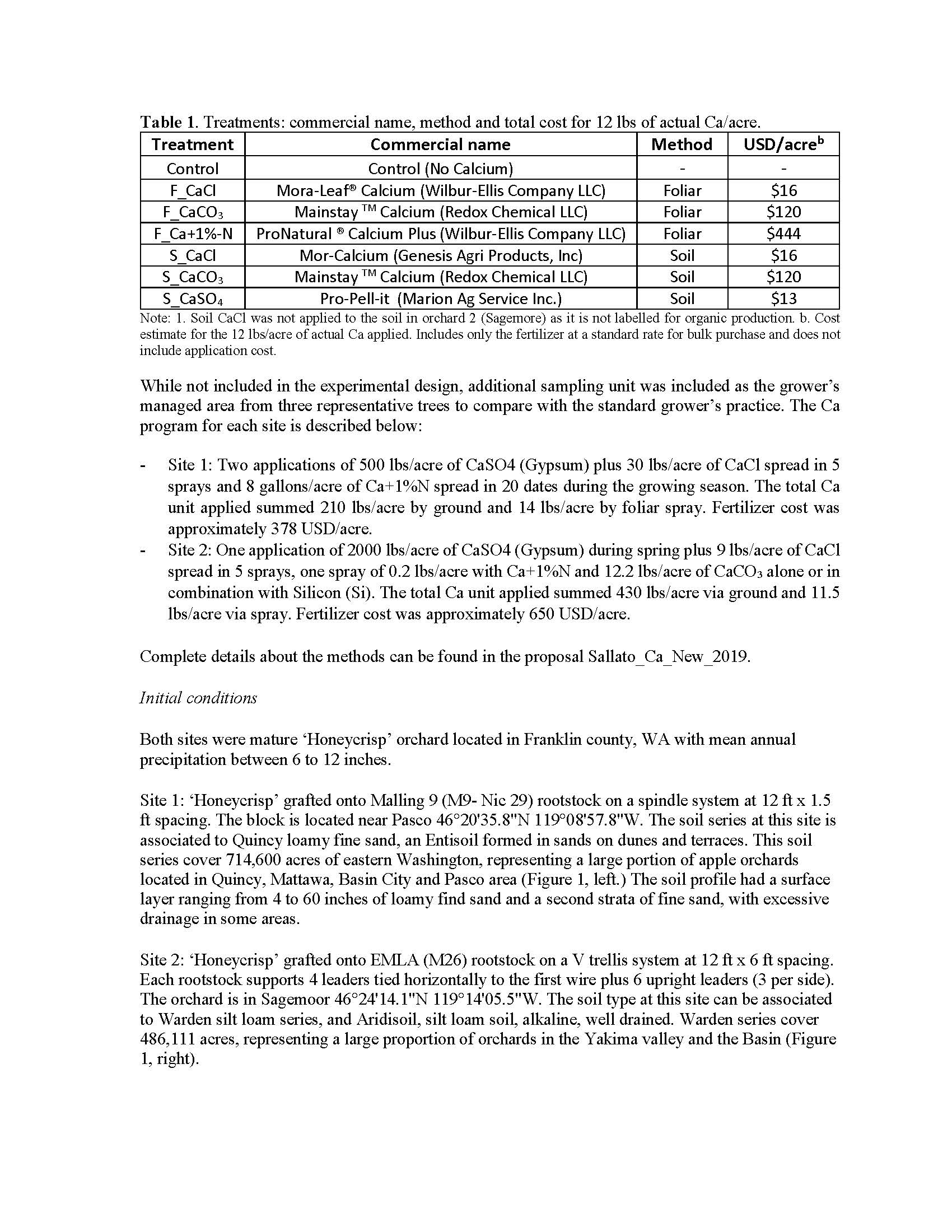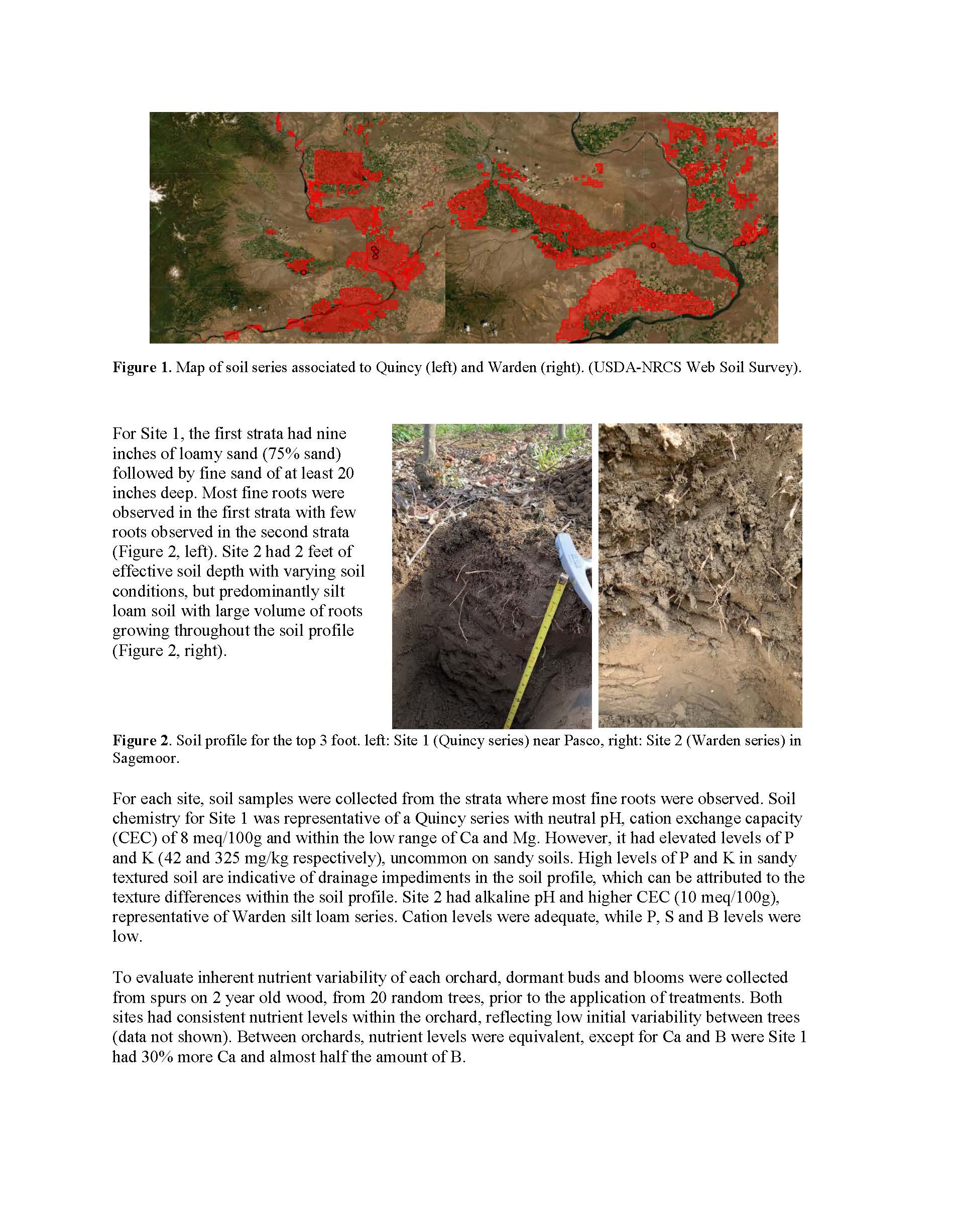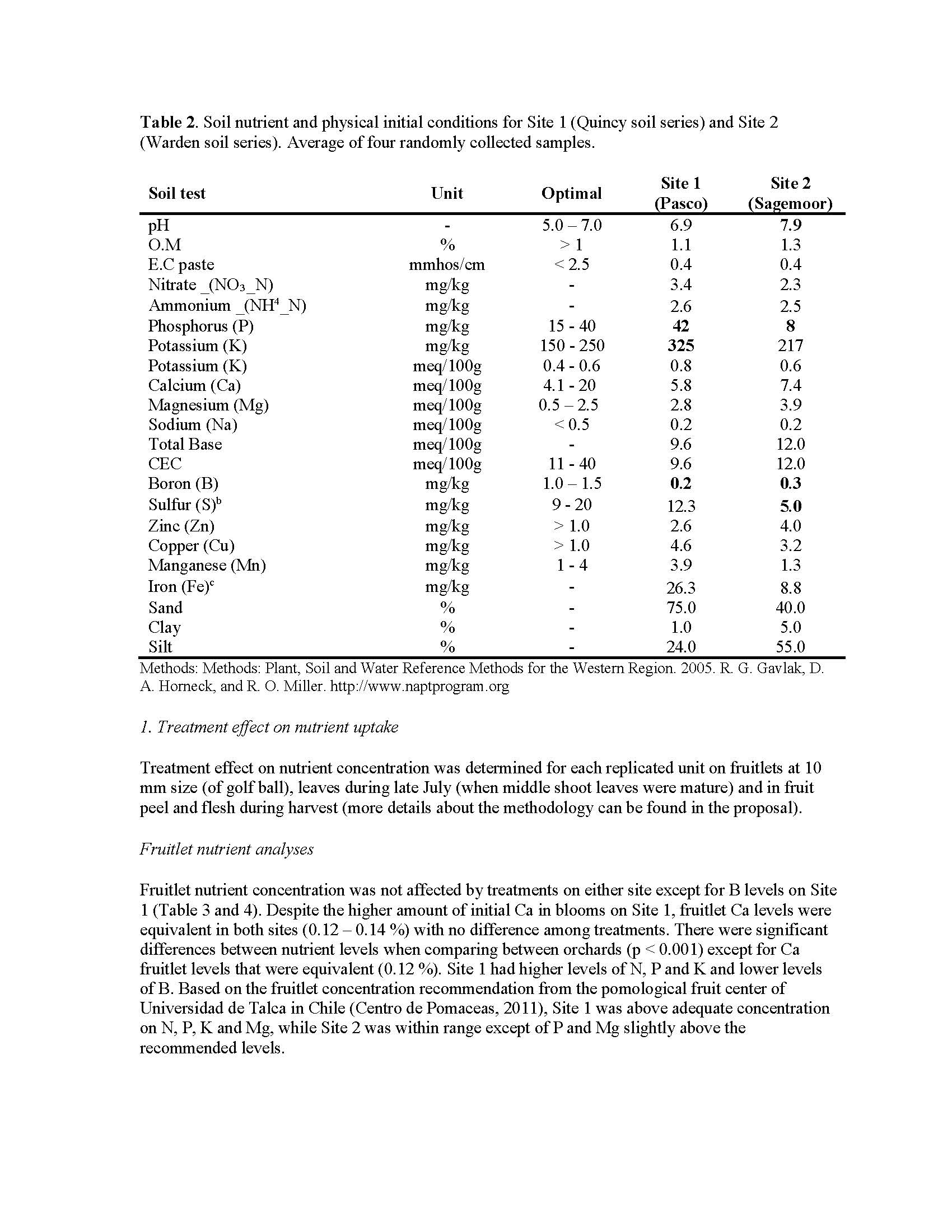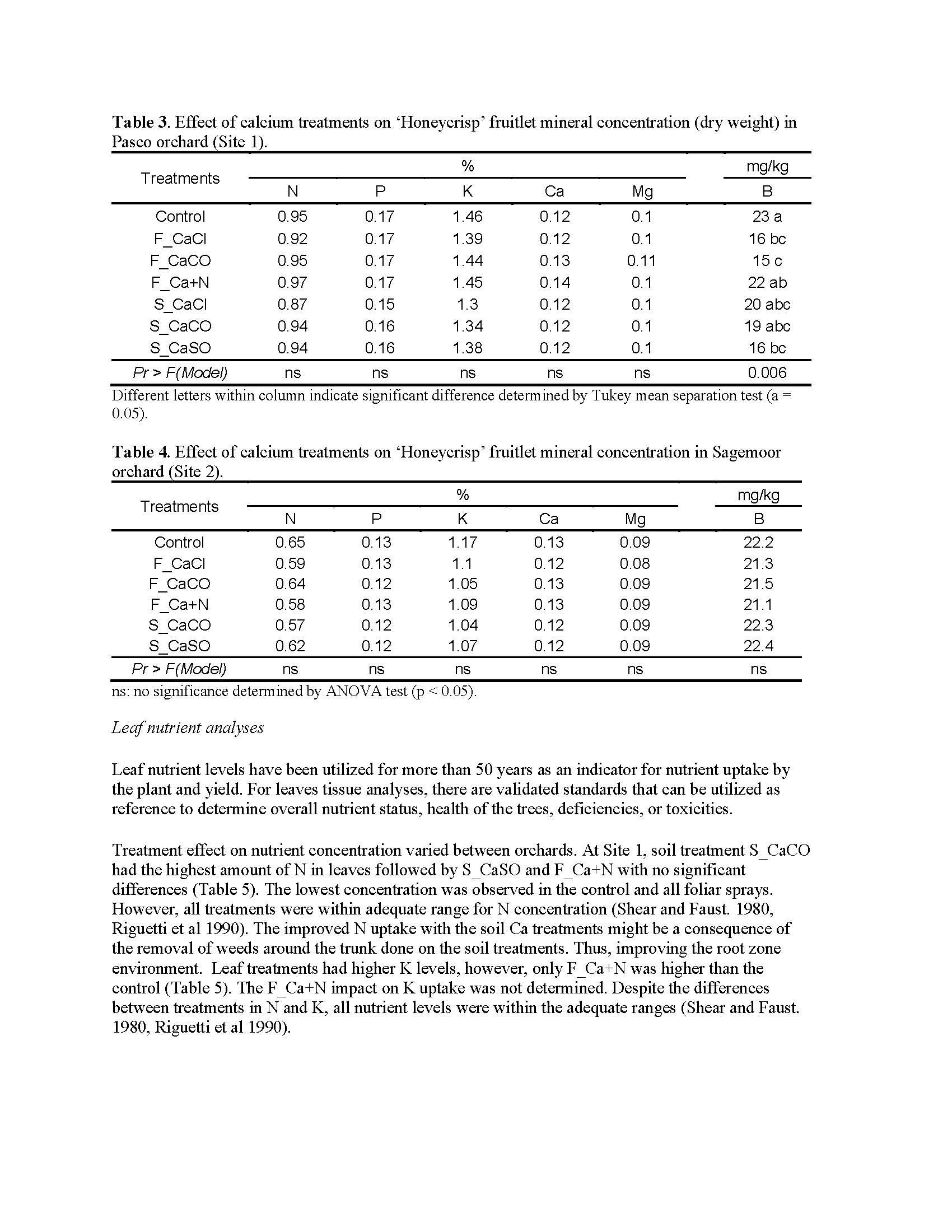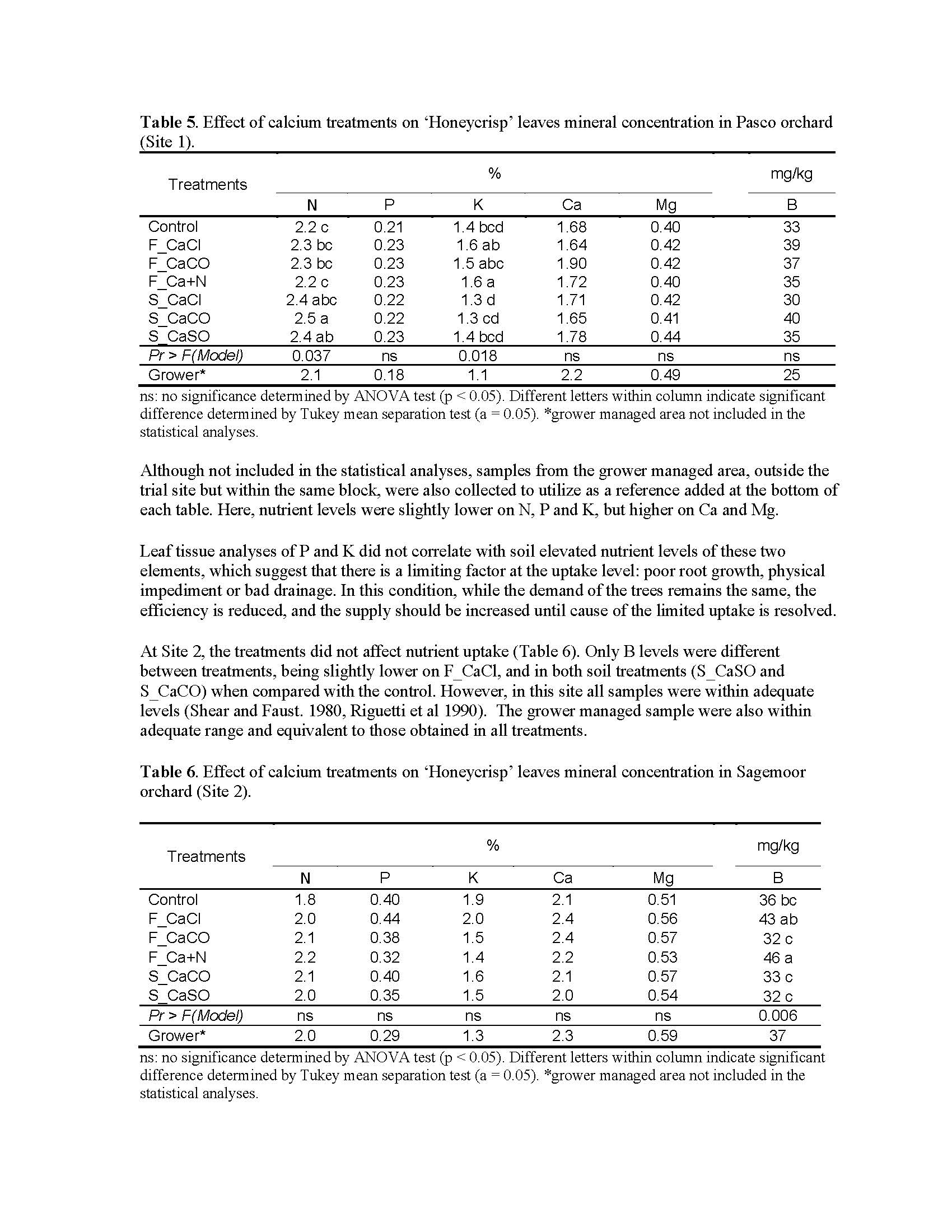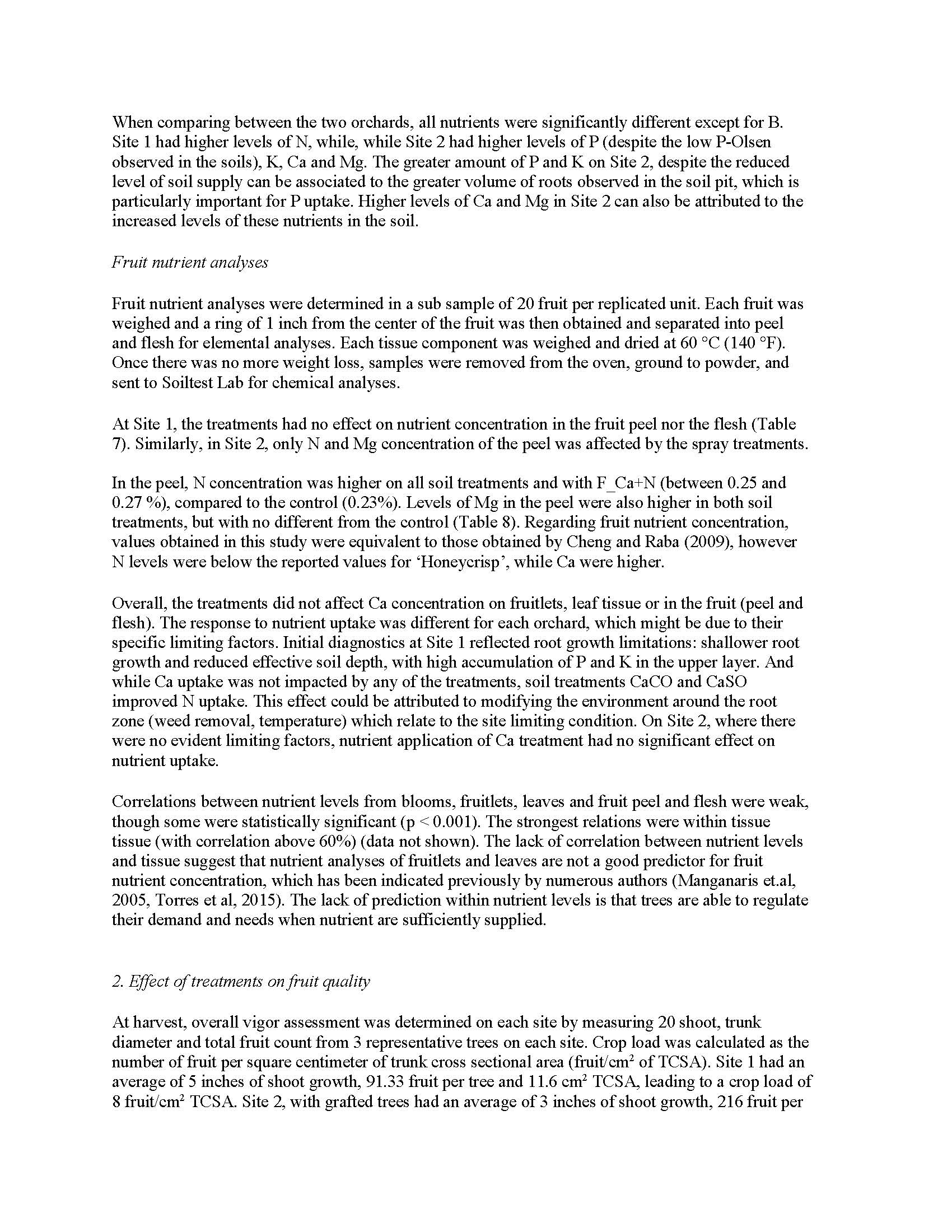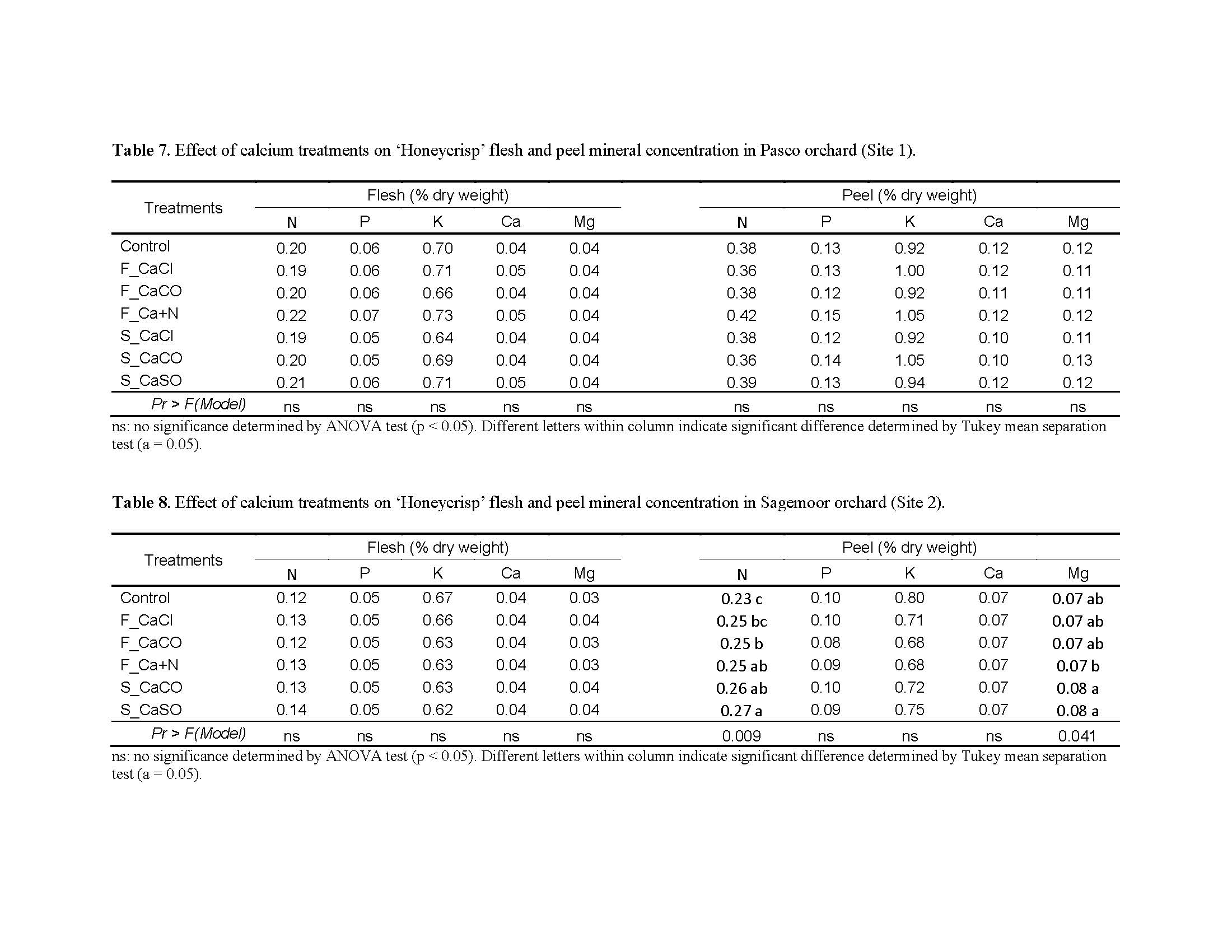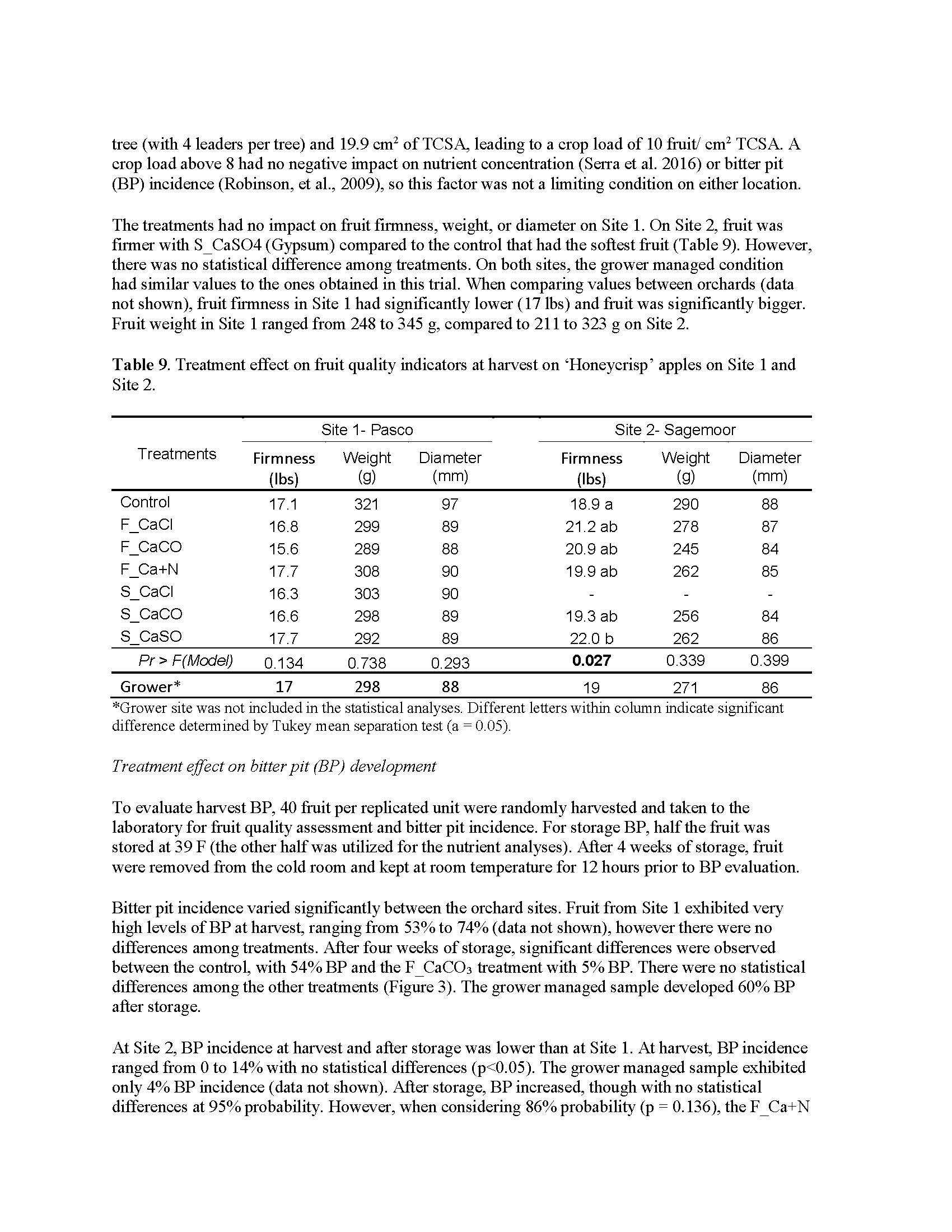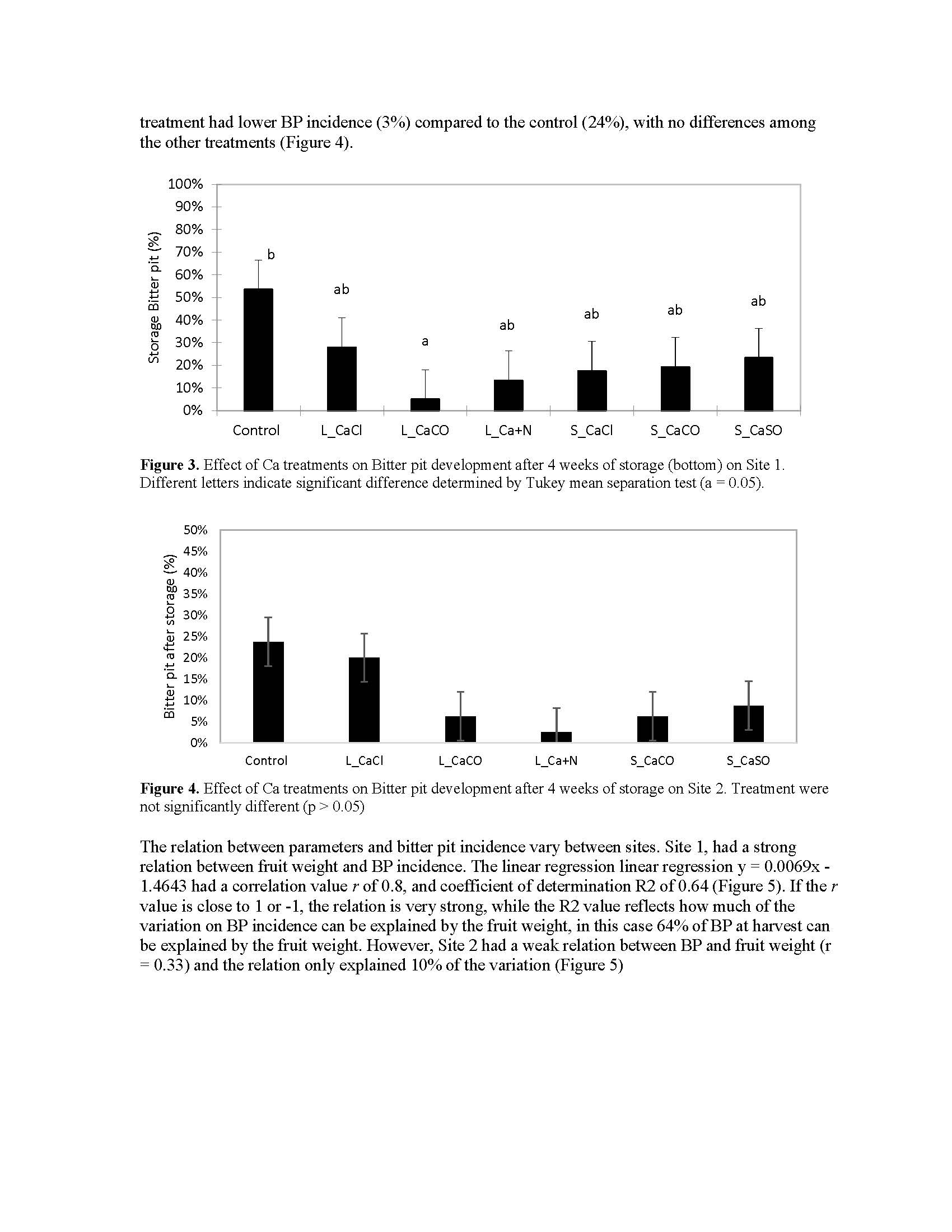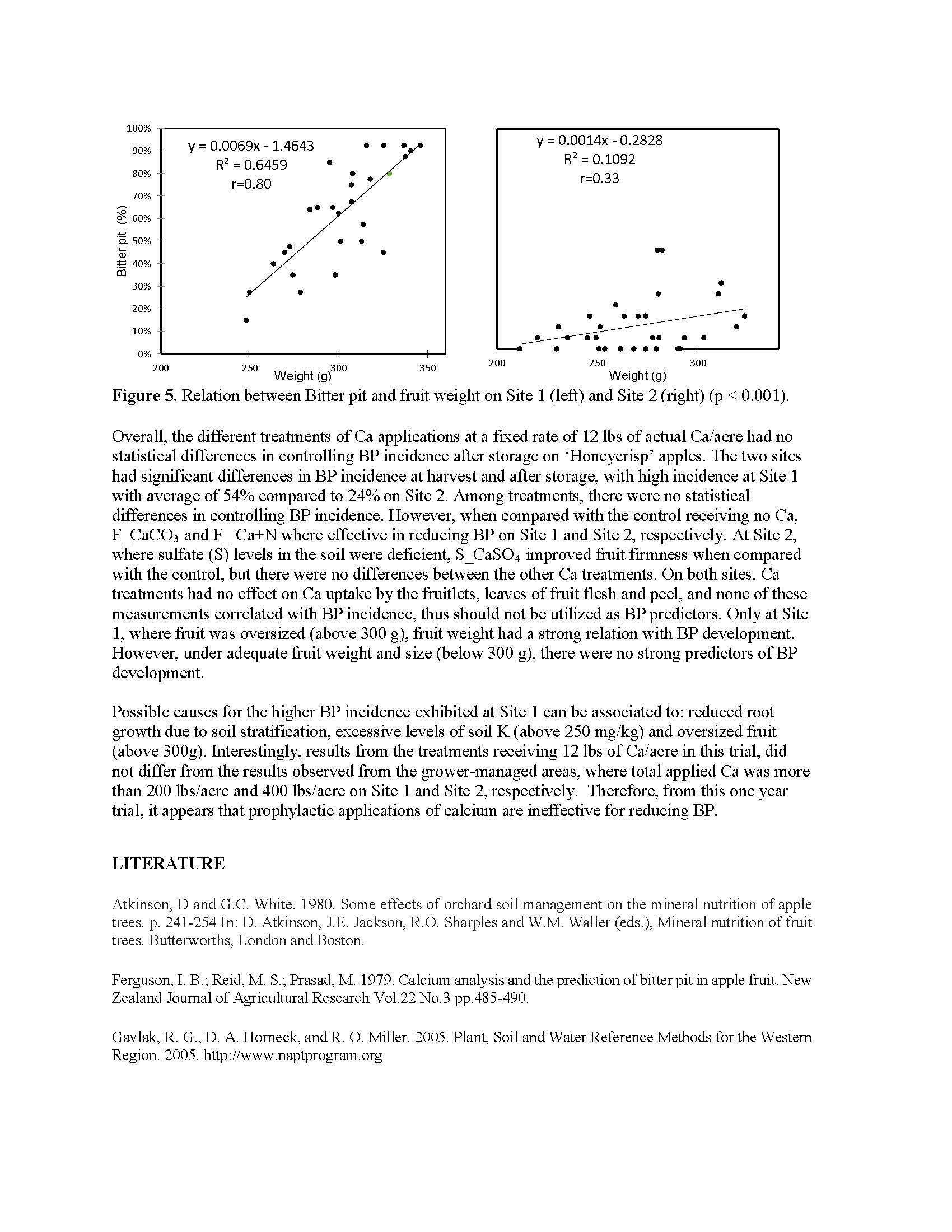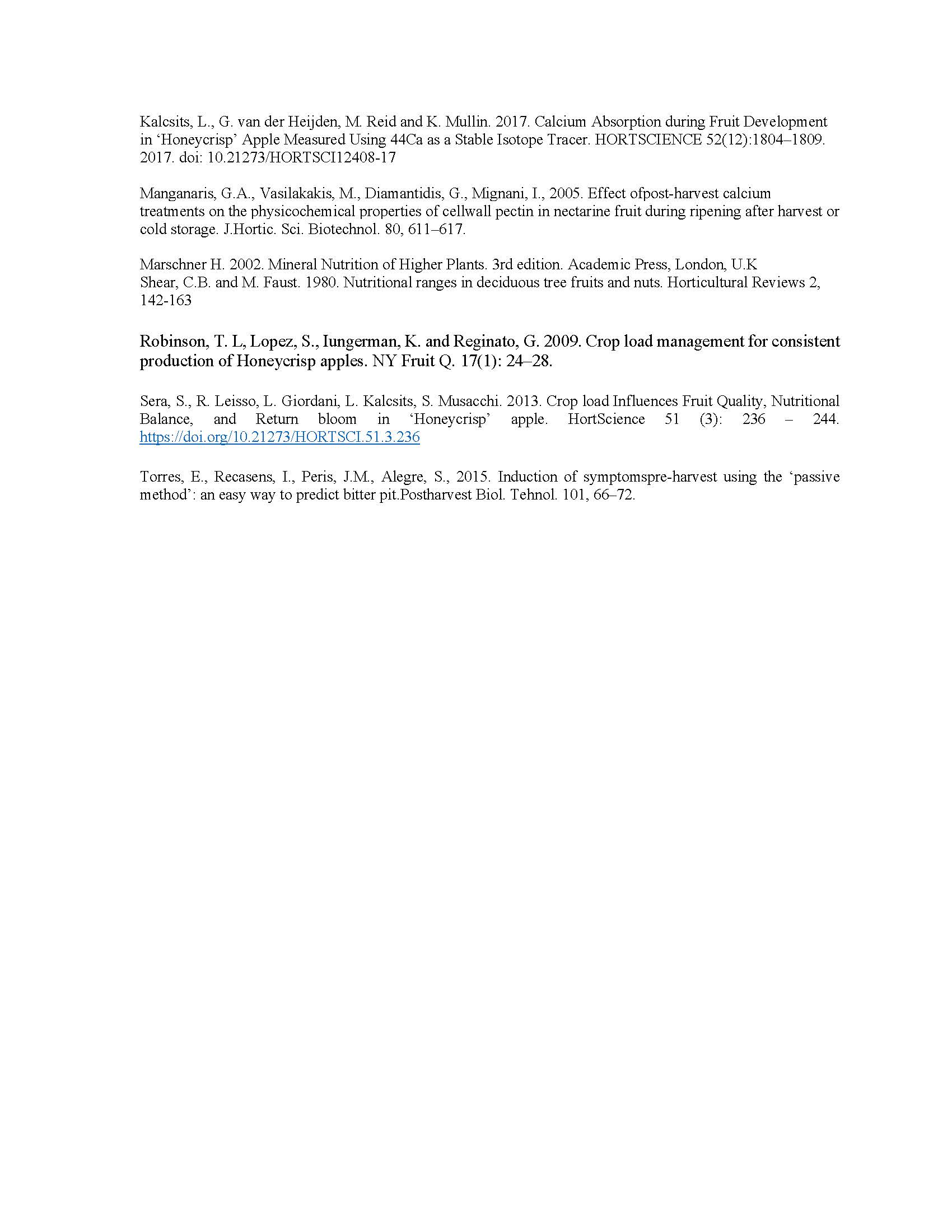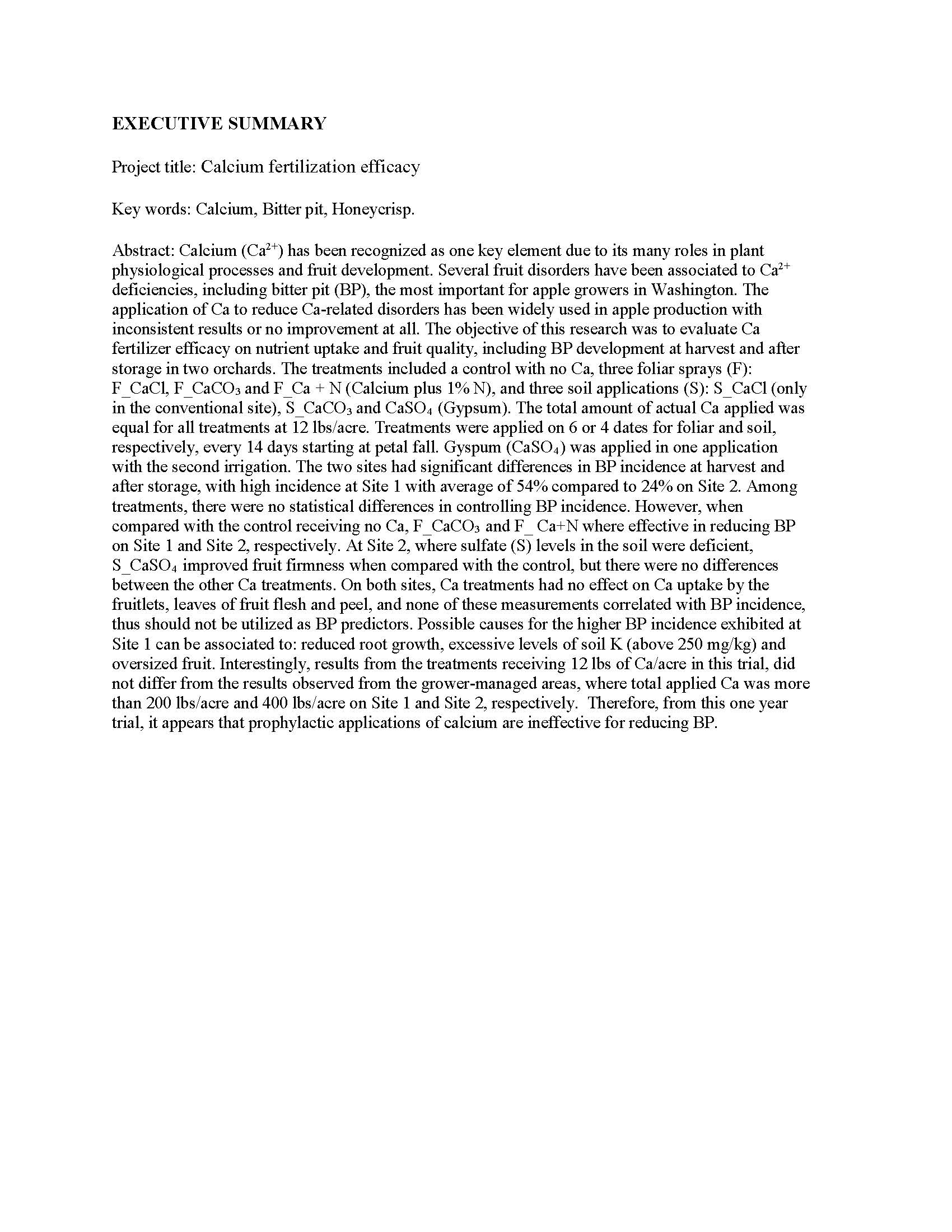Calcium fertilization efficacy
Author: Bernardita Sallato
Published: 2021
Summary: Abstract: Calcium (Ca2+) has been recognized as one key element due to its many roles in plant physiological processes and fruit development. Several fruit disorders have been associated to Ca2+ deficiencies, including bitter pit (BP), the most important for apple growers in Washington. The application of Ca to reduce Ca-related disorders has been widely used in apple production with inconsistent results or no improvement at all. The objective of this research was to evaluate Ca fertilizer efficacy on nutrient uptake and fruit quality, including BP development at harvest and after storage in two orchards. The treatments included a control with no Ca, three foliar sprays (F): F_CaCl, F_CaCO3 and F_Ca + N (Calcium plus 1% N), and three soil applications (S): S_CaCl (only in the conventional site), S_CaCO3 and CaSO4 (Gypsum). The total amount of actual Ca applied was equal for all treatments at 12 lbs/acre. Treatments were applied on 6 or 4 dates for foliar and soil, respectively, every 14 days starting at petal fall. Gyspum (CaSO4) was applied in one application with the second irrigation. The two sites had significant differences in BP incidence at harvest and after storage, with high incidence at Site 1 with average of 54% compared to 24% on Site 2. Among treatments, there were no statistical differences in controlling BP incidence. However, when compared with the control receiving no Ca, F_CaCO3 and F_ Ca+N where effective in reducing BP on Site 1 and Site 2, respectively. At Site 2, where sulfate (S) levels in the soil were deficient, S_CaSO4 improved fruit firmness when compared with the control, but there were no differences between the other Ca treatments. On both sites, Ca treatments had no effect on Ca uptake by the fruitlets, leaves of fruit flesh and peel, and none of these measurements correlated with BP incidence, thus should not be utilized as BP predictors. Possible causes for the higher BP incidence exhibited at Site 1 can be associated to: reduced root growth, excessive levels of soil K (above 250 mg/kg) and oversized fruit. Interestingly, results from the treatments receiving 12 lbs of Ca/acre in this trial, did not differ from the results observed from the grower-managed areas, where total applied Ca was more than 200 lbs/acre and 400 lbs/acre on Site 1 and Site 2, respectively. Therefore, from this one year trial, it appears that prophylactic applications of calcium are ineffective for reducing BP.
Keywords:

